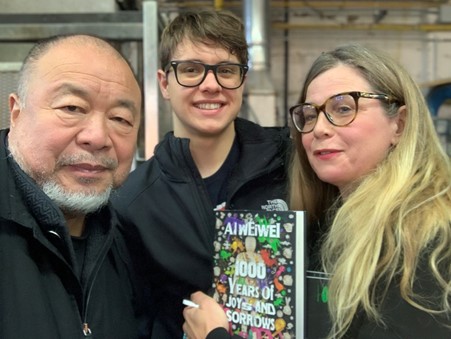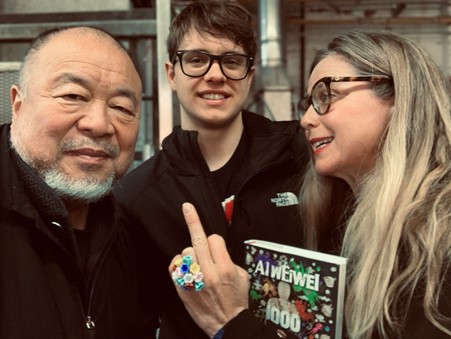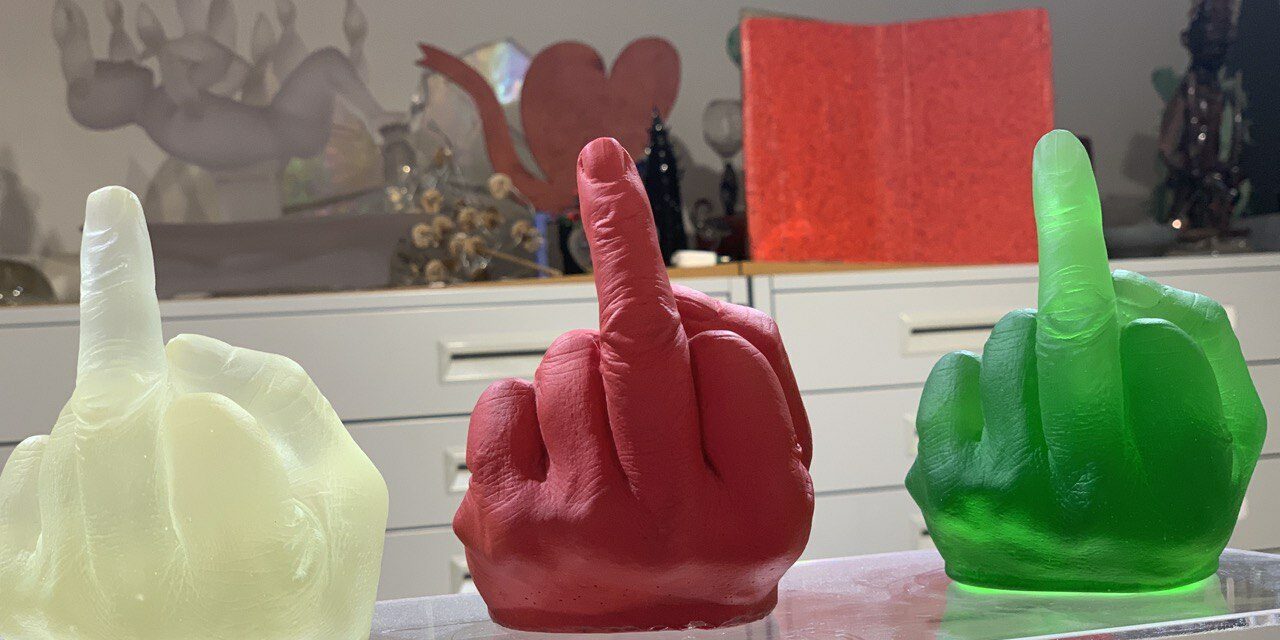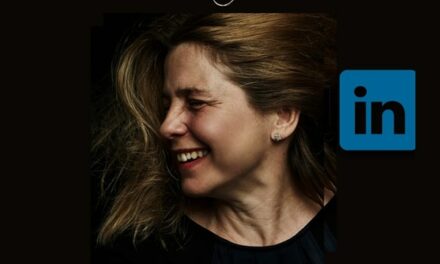The artist, as we know him, is deceased. He no longer weeps for the incongruous pairing of pink and green. He doesn’t worship at the altar of Pollock, nor would he so much as contemplate shredding a Banksy in some weird, macho display of creative hegemony. He won’t leave a used tissue on the floor of some thankless postmodern art exhibit. Furthermore, he’d be loath to name said exhibit ‘Rhapsody in White- Nasal Congestion 12’. He has not sat through all 8 hours and 5 life-affirming minutes of Andy Warhol’s Empire. He is not Yoko Ono. He won’t tell you about the time that his aunt saw Damien Hirst buying toilet roll in the Charing Cross Waitrose. He doesn’t care about Orphists, Cubists, Dadaists, Existentialists, Fauvists, Impressionists, Neo-Impressionists, Futurists, YBAs. He is, I reiterate, deceased.
What, you may ask, killed him?
The question remains as to how he met his end. Perhaps he choked on a Gitanes. Got tangled in his artist’s smock and slipped, in some biblical irony, from the huge crucifix on which he’d been affixing his paintings. Maybe he was eaten by whatever bacterial disease it is that lives and thrives inside Tracy Emin’s Unmade Bed. It is, after all, hard to say. What remains however, is that the artist is dead.
Long live the artist.

Because, whilst the artist as we know him- clichéd, righteous, pretentious breathes his last, art itself has another meaning and another impetus: to transmute our bleak, sprawling landscape of pain into something tangible and touchable, something truthful. In this era of hopelessness, art itself has irrevocably changed the artist, has asked him to justify his own being and his own work, how he perceives the world and how he castigates its cruelty. In the 21st century, the conceptualisation of the ‘artist’ as creator is no longer good enough. As with the advent of globalization, internet culture and social media, the artist must become an actor in his own play of grief. He is now a solitary island protest, a bringer of dreams, and a political statement that will have sway not in a gallery, but through a computer screen at half past eleven on a Tuesday night after two bottles of wine. The artist has died and been born again. He speaks for us and we speak for him. He knows only authenticity. He is an empathetic leader. He is post-knowledge and post-truth, yet seeks to offer both. He is, more than anything, alive.
Ai Weiwei is one of these artists. Caroline was lucky enough to meet him at recently Berengo studio in Venice, where he produces his infamous ‘Study of Perspective’ middle fingers, glass recreations of a roving photography exercise which has gained traction across the world; Ai Weiwei’s image of his own middle finger raised in an act of inconspicuous rebellion before the Trump Towers has reached iconic status in 21st Century political photography.

‘Study of Perspective’ might be puckish or seething, depending on how the viewer themself feels when looking at it; the ability to offer a spectrum of interpretation in one image is what makes Ai Weiwei an artist of today: The hunter becomes the hunted, and the artist becomes the art- this is perhaps the purest distillation of digital values in an increasingly impersonal world. Ai Weiwei is more, however, than mere disembodied fingers; his most recent work is 1000 Years of Joys and Sorrows, a staggeringly honest book about China, his father, and Ai Weiwei’s own life.
1000 Years is the latest instalment in what might be considered a series of works documenting contemporary struggle; recent productions have included Coronation, a film about life in Wuhan during the COVID-19 pandemic, and Cockroach, which explores the 2019 Hong Kong protest movement. It is perhaps striking that Ai Weiwei has waited until now to present his own addition to what we might consider the miserable canon of modern social injustice; the political demonization of Ai Weiwei’s father, his family’s subsequent banishment to ‘Little Siberia’, his father’s years of forced hard labour, and more recently, the artist’s own detention by Chinese Authorities.

There is little point in writing some banal attempt at ‘What can we learn from Ai Weiwei?’: I’m not stupid and nor are you. We all know what we can learn from a man who has struggled against tyranny, political persecution, and the agonising deliberation of abandoning those you love in favour of a better life. Instead, it is (perhaps) more honest to consider what Ai Weiwei wants to achieve: After all, this is not a story of what Ai Weiwei can do for us, but what we can do for Ai Weiwei.
In his middle finger portraits, and latterly in his book, Ai Weiwei has actively reinterpreted himself as a product, one that the Chinese Authorities sought to destroy, and one he wants you, in the name of art itself, to use. Ai Weiwei sees beauty in protest, and beauty in truth. He wants us to take that principle, and carry it with us.
Most of us have not witnessed real hardship. I haven’t. Most likely nor have you. Ai Weiwei, however, has, and his work shows us, in all its textures and grooves and broken edges, the fragility and joy in being alive and able to feel what it means to live. In passively absorbing his work, he offers us a chance to acknowledge political protest, a liberty long disregarded in his mother country: despite his work in producing the iconic Bird’s Nest Stadium for the Beijing Olympic Games in 2008, he was detained three years later by Chinese Authorities for political disturbance. Ai Weiwei knows first-hand that concepts we believe to be immovable- national pride, faith, authenticity, honesty, truth, basic cultural and political freedom- are changeable; whilst we in the West may take them for granted, such principles as life and liberty are not guaranteed.

Ai Weiwei wants us to feel art- not as an artist who does something just because he can or because he believes he should. He considers art an act of defiance. Art is saying NO because we have the freedom to say such when others can’t- Ai Weiwei’s Middle Finger isn’t art. Nor is his book, his films, or his architecture. It might look pretty, it might not. It might be shiny. You might be able to touch it or watch it or read it. For Ai Weiwei, art is none of those things.
For Ai Weiwei, art is the act. Art is the creation of his glassware, the new-page smell of the first copy of 1000 Years to come hot from the printing press. Art is the fact that when Ai Weiwei holds his finger up at the Trump Tower, millions of people can witness him do it. Even better art? When someone tweets that they don’t like it. Ai Weiwei’s art is the finding joy in the pain of degeneration, and the ability to protest it. Ai Weiwei knows what it’s like to be silenced. His art is in the warmth of the sun, in breathing, in looking down at the street and seeing muck and grime and thousands of nameless, faceless people that he’ll never know in a society that he believes he can change for the better. Ai Weiwei wants us to feel the same lightness, the same hope. Ai Weiwei needs us to understand why it matters that we feel both Sorrows and Joys- that if we experience both, it means that we are alive and that we are free. We don’t need to see his work. We just need to be thankful that it exists. Because when Ai Weiwei is no longer allowed to speak, then nor are we.
The artist, then, as we think of him, is dead. That’s OK. We don’t need artists. We need art.
Ai Weiwei knows this.
The artist is dead. Long live the artist.
(Author: Anna Hanlon)
Interested in the Own your Story program? Please drop us a line




